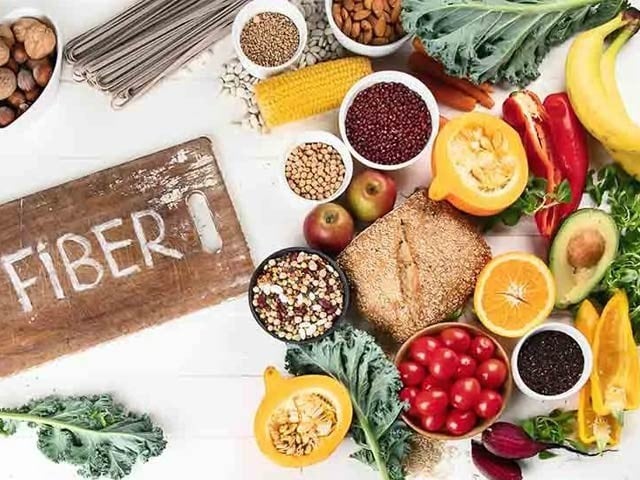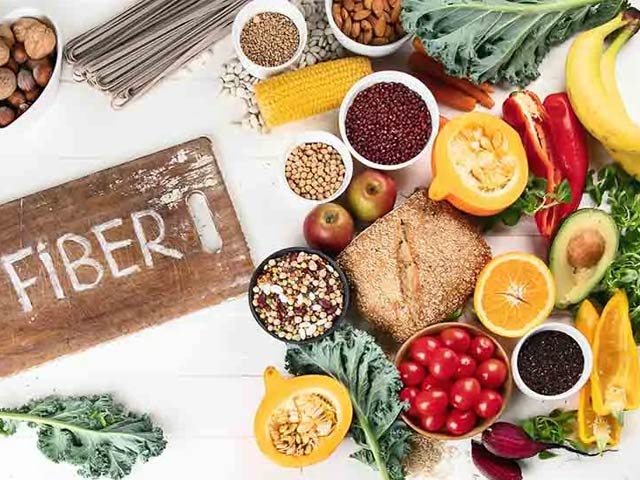
According to research, the more fiber you eat, the more beneficial it is. Photo: File
Fiber naturally reduces the risk of diseases like heart attack, stroke and diabetes and it also keeps your weight, blood pressure and cholesterol levels under control.
A study examines how much fiber we should be eating and how it benefits our health. A diet high in fiber or cellulose is a well-known remedy for constipation, but its health benefits are even greater.
How much fiber do we need? Researchers at the University of Otago in New Zealand state that people should include at least 25 grams of fiber in their diet per day. According to them, this amount is adequate for improving health, while exceeding 30 grams has its benefits.
A banana has a total weight of 120 grams, but it is not pure fiber. If everything including natural sugar and water is removed from it, three grams of fiber remains.
Most people in the world consume less than 20 grams of fiber per day. On average, women consume 17 grams and men consume 21 grams of fiber per day. Fiber is found in fruits, vegetables, breakfast cereals, breads, pasta made from whole grains, pulses, chickpeas, fruits and seeds.
How to get 30 grams of fiber? Elaine Rush is a professor at Auckland University of Technology. He explains how to reach the limit of 25 to 30 grams of fiber.
Half a cup of oats – 9 grams of fiber
Two Wetabucks – 3 grams of fiber
Large slice of brown bread – 2 grams of fiber
One cup of cooked lentils – 4 grams of fiber
Baked Potato with Peel – 2 grams of fiber
Half a cup of white beets – 1 gram of fiber
One carrot – 3 grams of fiber
Apple with peel – 4 grams of fiber
These techniques can also be tried to increase fiber intake. Bake potatoes with skins.
Replace white bread, pasta and rice with whole-grain varieties. Eat gram and dal curry or add it to a salad. Fruits and fresh fruits for never-ending hunger pangs. Eat five fruits and vegetables a day.
Research has revealed several benefits of consuming more fiber. According to these studies, if 1,000 people who previously ate a low-fiber diet (less than 15 grams) were switched to a high-fiber diet (25 to 29 grams), 13 diseases and six cases of heart disease were avoided. can go.
In addition, consuming a high-fiber diet reduces the risk of type 2 diabetes and stomach cancer, while helping with weight loss, controlling blood pressure, and improving cholesterol levels.
According to research, the more fiber you eat, the more beneficial it is. Previously, it was thought that fiber did not have much effect. The human body cannot digest it and it simply passes through the intestines. But fiber makes us feel full, meaning we don’t feel hungry, and it also affects the way fat is absorbed in the small intestine, and when it’s the bacteria’s turn in the large intestine, the process gets even more interesting.
There are billions of bacteria in the large intestine and fiber is their food. Bacteria use fiber to make various chemicals. It contains small molecule fatty acids and this process affects the entire body. Professor Cummings says: “This organ is for digesting fiber, which most people don’t use.”
The fact that fiber and whole grains, fruits and vegetables are good for health is not surprising. But it’s worrying that people are skipping fiber because of the popularity of low-starch diets. This research confirms that fiber and whole grains are indeed essential for a long life.
(function(d, s, id){
var js, fjs = d.getElementsByTagName(s)[0];
if (d.getElementById(id)) {return;}
js = d.createElement(s); js.id = id;
js.src = “//connect.facebook.net/en_US/sdk.js#xfbml=1&version=v2.3&appId=770767426360150”;
fjs.parentNode.insertBefore(js, fjs);
}(document, ‘script’, ‘facebook-jssdk’));
(function(d, s, id) {
var js, fjs = d.getElementsByTagName(s)[0];
if (d.getElementById(id)) return;
js = d.createElement(s); js.id = id;
js.src = “//connect.facebook.net/en_GB/sdk.js#xfbml=1&version=v2.7”;
fjs.parentNode.insertBefore(js, fjs);
}(document, ‘script’, ‘facebook-jssdk’));



